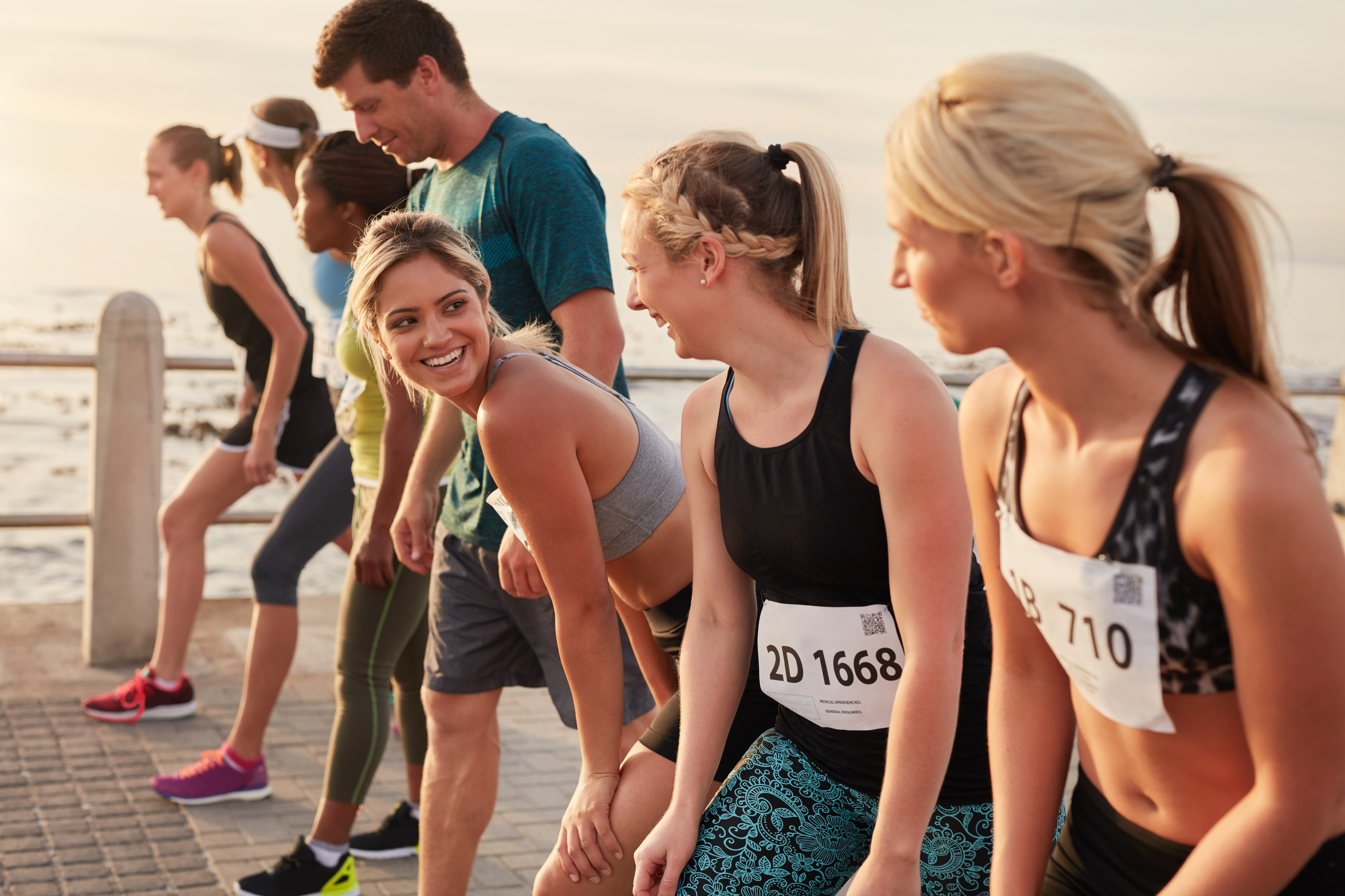Whether you’ve signed up to the London Marathon, or you’re looking further afield to more exotic stretches of hot, dusty road, tackling more than 25 miles of running non-stop is no small feat.
Whatever your ability or ambition, marathons are notoriously tough, both physically and mentally – so it pays to think about a game plan in the lead-up to the big day.
As well as diligently racking up the miles with a solid training regime, arming yourself with insider knowledge will give you the best chances of completing the race pain-free and in your target time – and you might even achieve that elusive smiling, sweat-free selfie at the other end too.
We asked some experts to share their top tips and marathon advice, to help you navigate training, racing and recovery after the big day…
1. Don’t neglect your strength work
“Yes, the marathon is an endurance event, but the cornerstone to being able to cope with the volume of running required is to ensure your body is strong and resilient enough to stay injury-free,” says Luke Worthington, elite trainer at Third Space.
He believes core stability and glute strength should be the priorities in bulletproofing your body for marathon day, so it’s wise to build cross-training activities, like barre, yoga and HIIT, into your weekly plans.
“If you look at the start line of any public marathon event, you’ll see a plethora of knee supports and brightly coloured corrective tape – these people are starting the event injured, and will likely have picked up certain niggles from their training methods,” says Worthington. “The majority of overuse injuries can be traced back to simply not being strong enough.”
2. Stay warm at the start
Many runners will race in less clothing than they would train in, opting for light pieces that will keep you cool on a long run, but it’s worth bringing additional layers so you don’t freeze on the starting line.
“You might not realise quite how much standing around you have to do for a running race,” says Max Willcocks, Balance Festival ambassador and ultra-marathon runner.
“Once you drop your bag, there is usually a lot of standing around in the cold, waiting for the race to start. It’s acceptable to wear some disposable clothing that you can cast aside at the last minute,” says Willcocks.
In fact, the Boston Marathon gathers 26 tonnes of charitable clothing each year from runners who leave their belongings on the start line before the race.

3. Eat a good breakfast
Getting a good breakfast is crucial: choose wisely and it will give you the fuel to push through the hardest miles.
Opt for a satisfying bowl of low-GI oats, which slowly release energy and help keep your blood sugar levels steady. Worthington notes that race day is “not the time to try any crazy diet tricks”.
Eat what you would usually eat on a normal training day, and pick foods that you know have worked for you before.
“Chances are, you have to wake up really early and just getting to the start of the marathon can take a lot of time,” says Willcocks. “Think ahead and maybe pack a banana for last-minute fuel.”

4. Be sensible with your footwear
Turning up to a race in brand new kit might look good – but it could well be a kiss of death. “Don’t fall into the trap of treating yourself to a brand new pair of kicks for your big day,” says Worthington.
“Run in the shoes you’ve been training in because two hours into a marathon isn’t the time to realise you’re getting blisters. By the same token, don’t try it in a pair that are completely worn out – a month of training use will be perfect.”
5. Breathe properly to avoid stitches
Marathons hurt. The dreaded side stitch can be crippling for endurance athletes, so spend some time working on your breathing mechanics. “Stitches are a direct result of excessive dysfunctional breathing,” says Worthington.
“We have a large muscle through the middle of our bodies specifically designed to draw air into the chest cavity, but in order for the diaphragm to do its job, it has to be in the right position to do so.”

‘Accessory’ respiratory muscles, such as the scalene muscles and upper traps, have other roles to play during exercise but will have to pick up the slack if your diaphragm is not in proper position.
This is when your muscles get overworked and cramp can happens. “Counteract this by working on your alignment and breathing mechanics as part of your race day prep,” says Worthington.
“If the worst should happen during the event and you get hit with a stitch, try exhaling for for four strides, inhaling for two, and making the exhale as forceful as you can.”
6. Get a coach

“Completing a marathon is no mean feat and for the most part, running is an individual sport,” says Worthington. “However, investing in a few sessions with a running coach to look at your technique will pay you back tenfold.”
As well as helping you to build a proper training plan, a qualified PT can look at your gait to identify any biomechanical issues that can lead to overuse injuries, such as shin splints, compartment syndrome, anterior knee pain or Achilles pain.
7. Get some Vaseline
Chaffing is a rite of passage for a runner, but it can be avoided with the right clothing and a slick of Vaseline, which Worthington calls “an endurance athlete’s best friend”.
“Chaffing is no joke and can cause some major damage,” he says. “Nipples and inner thighs are most at risk, and greasing them up will be worth it in the long run.”
8. Everyone supporting is your best friend
Even if you’re not the competitive type, the energy and atmosphere of race day is often what draws many runners back, year after year.
“Write your name in big letters on the front of your running top,” says Willcocks. “You’ll be surprised how many times people will cheer you on personally. It makes a big difference.”





